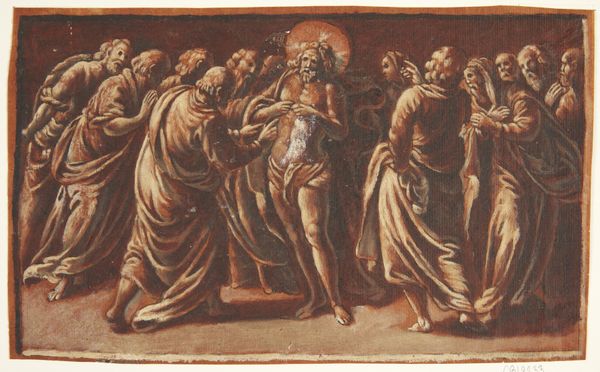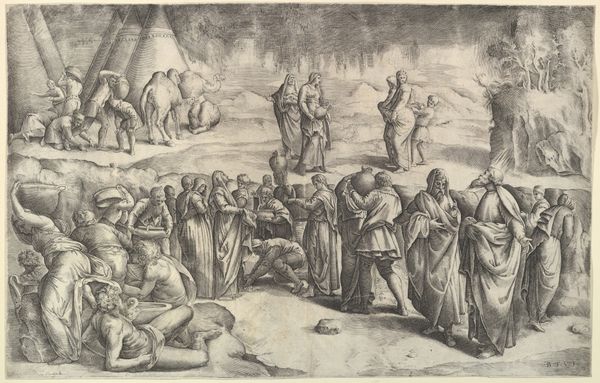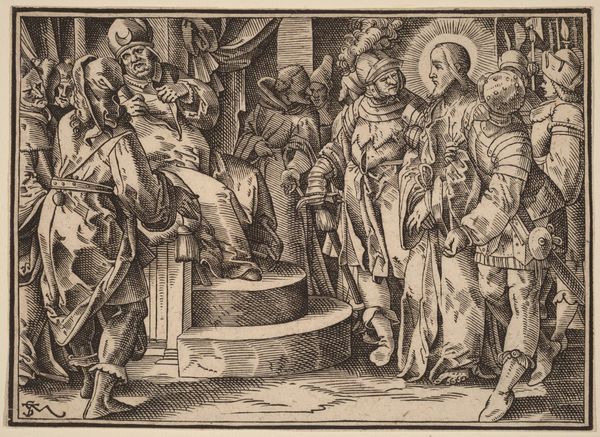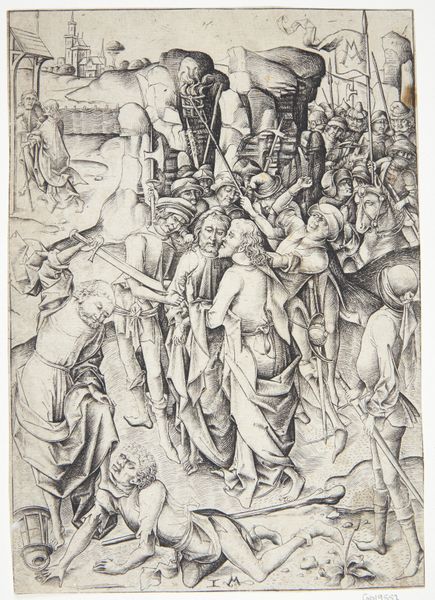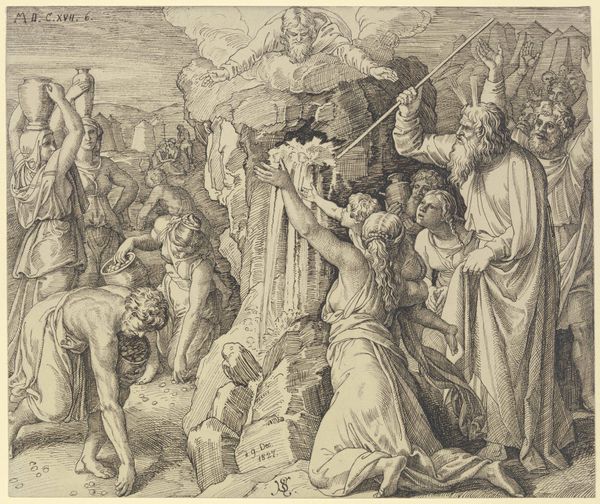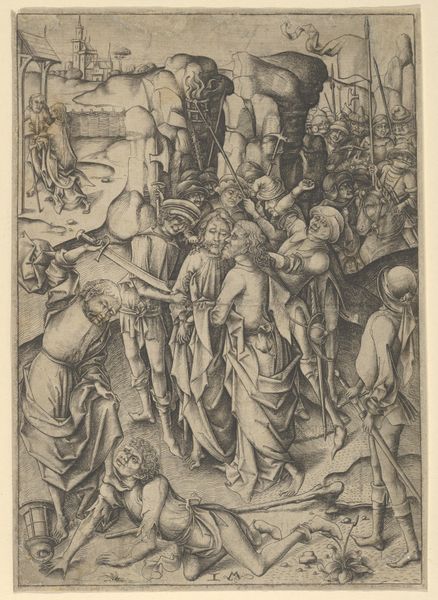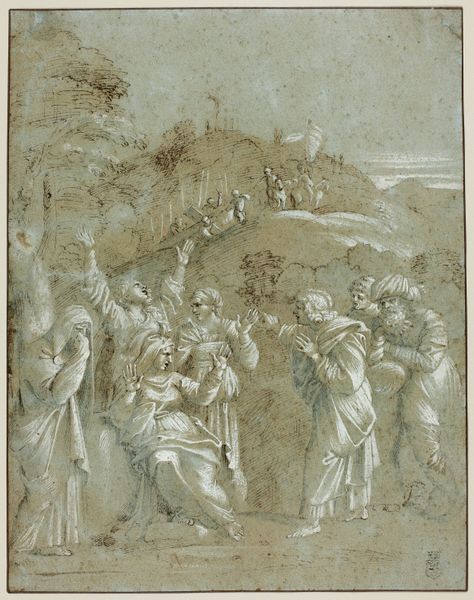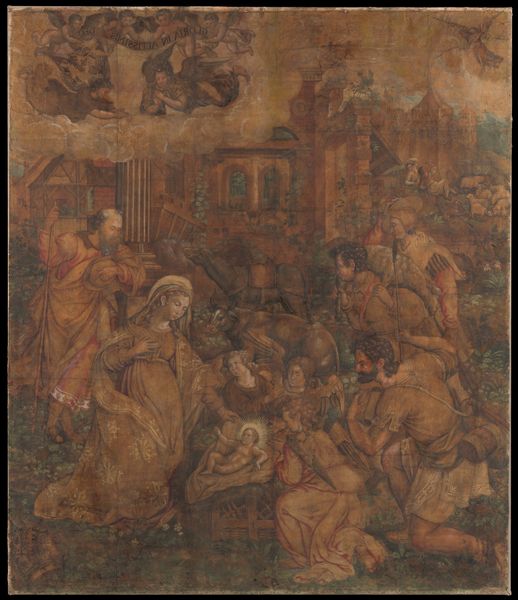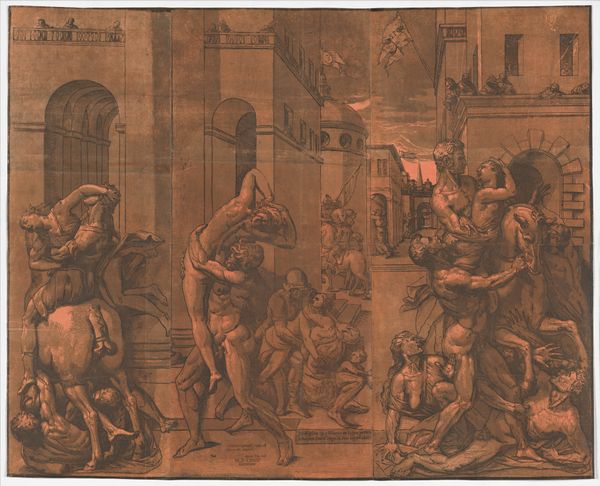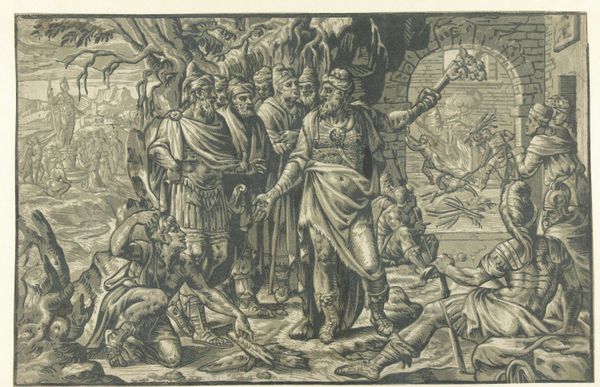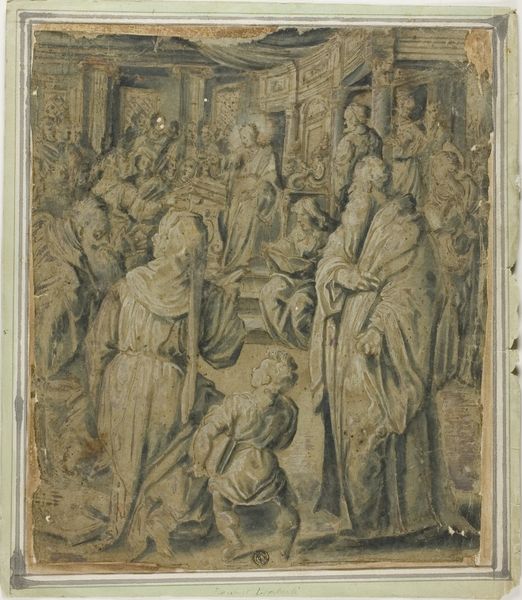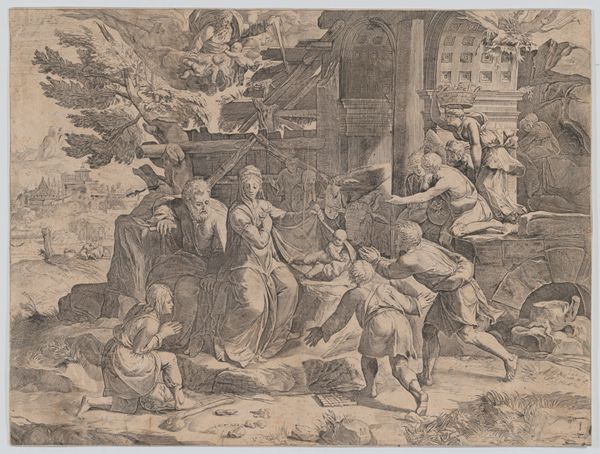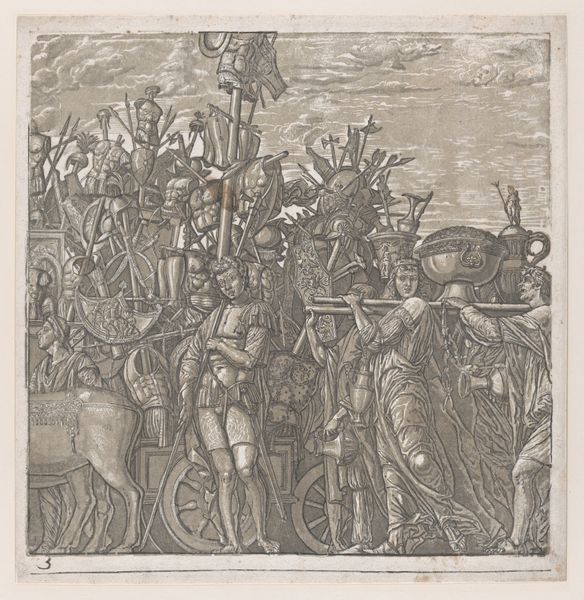
tempera, painting
#
narrative-art
#
tempera
#
painting
#
figuration
#
oil painting
#
genre-painting
#
history-painting
#
italian-renaissance
#
early-renaissance
#
christ
Dimensions: Overall 8 3/4 x 17 in. (22.2 x 43.2 cm); irregular painted surface 7 3/4 x 16 1/8 in. (19.7 x 41 cm)
Copyright: Public Domain
Curator: Examining Bartolomeo di Tommaso's "The Betrayal of Christ," executed in tempera sometime between 1440 and 1450, presently held at the Metropolitan Museum of Art in New York. My initial response is quite stark. There's a pronounced dynamism countered by an odd stillness. Editor: That tension, I think, stems from the painting's attempt to grapple with a theological subject during the early stages of the Renaissance’s evolving artistic and material practices. The medium, tempera, dictates a certain rapid execution that must consider pigment choices related to location and access of specific goods within 15th century Umbria. Curator: Precisely. Note the use of color – a high-keyed palette rendering spatial recession somewhat ambiguous, flattened, in favor of symbolic presentation. The chromatic intensity underscores emotional discord. Forms and figuration are abstracted almost, less about accurate proportion and more about narrative urgency. Look closely at the composition of figures; the crowding evokes claustrophobia, accentuating the betrayal's personal and cosmic impact. The almost decorative gold details in certain figures mark a divergence in social status that is materially embedded. Editor: Agreed, but the labor must also be factored in. Beyond gold application and symbolic gesture, consider the physical application of tempera, built upon artisanal traditions and guilds – this image of betrayal becomes the very product of cooperation, reflecting material circumstances influencing both style and output, so deeply affected by its reliance on social systems. The location is also significant in a non-obvious way; for whom and where was the image created for. Curator: A pertinent point, one regarding audience, function, context, and, more generally, reception. Thinking now of the intentional fracturing of the piece into episodes, one that seeks to distill complexity into an easily digestible moment. But the use of bold color strikes me foremost as a key structuring device, working toward formal harmony out of what appears at first a chaos. Editor: This "chaos", might be an attempt to engage its contemporary audience through the employment of familiar materiality. Such devotional images facilitated spiritual experiences using very real worldly, material goods. The true magic resides, of course, in their transmutation. Curator: I would simply suggest the alchemy rests in the pictorial logic as well, less tied directly to the circumstances of material. Editor: A debate as old as the work itself, wouldn't you agree? Curator: Indeed. And one it elegantly transcends.
Comments
No comments
Be the first to comment and join the conversation on the ultimate creative platform.
